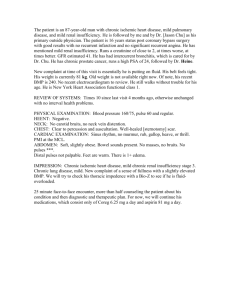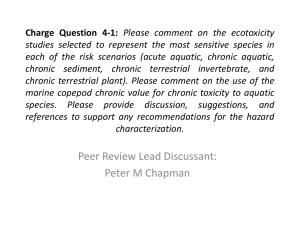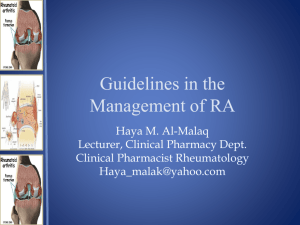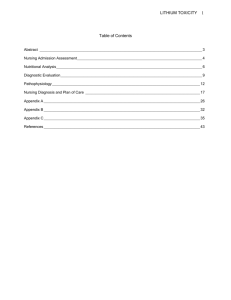Lithium - CriticalCareMedicine
advertisement
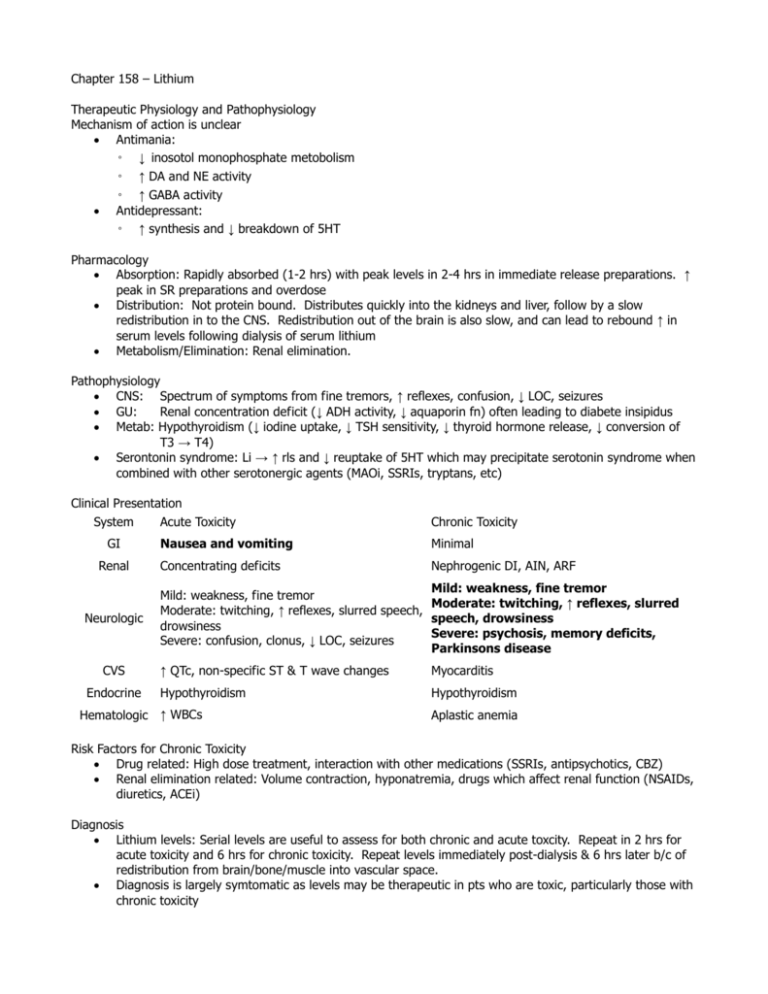
Chapter 158 – Lithium Therapeutic Physiology and Pathophysiology Mechanism of action is unclear Antimania: ◦ ↓ inosotol monophosphate metobolism ◦ ↑ DA and NE activity ◦ ↑ GABA activity Antidepressant: ◦ ↑ synthesis and ↓ breakdown of 5HT Pharmacology Absorption: Rapidly absorbed (1-2 hrs) with peak levels in 2-4 hrs in immediate release preparations. ↑ peak in SR preparations and overdose Distribution: Not protein bound. Distributes quickly into the kidneys and liver, follow by a slow redistribution in to the CNS. Redistribution out of the brain is also slow, and can lead to rebound ↑ in serum levels following dialysis of serum lithium Metabolism/Elimination: Renal elimination. Pathophysiology CNS: Spectrum of symptoms from fine tremors, ↑ reflexes, confusion, ↓ LOC, seizures GU: Renal concentration deficit (↓ ADH activity, ↓ aquaporin fn) often leading to diabete insipidus Metab: Hypothyroidism (↓ iodine uptake, ↓ TSH sensitivity, ↓ thyroid hormone release, ↓ conversion of T3 → T4) Serontonin syndrome: Li → ↑ rls and ↓ reuptake of 5HT which may precipitate serotonin syndrome when combined with other serotonergic agents (MAOi, SSRIs, tryptans, etc) Clinical Presentation System Acute Toxicity GI Renal Neurologic CVS Endocrine Chronic Toxicity Nausea and vomiting Minimal Concentrating deficits Nephrogenic DI, AIN, ARF Mild: weakness, fine tremor Mild: weakness, fine tremor Moderate: twitching, ↑ reflexes, slurred Moderate: twitching, ↑ reflexes, slurred speech, speech, drowsiness drowsiness Severe: psychosis, memory deficits, Severe: confusion, clonus, ↓ LOC, seizures Parkinsons disease ↑ QTc, non-specific ST & T wave changes Myocarditis Hypothyroidism Hypothyroidism Hematologic ↑ WBCs Aplastic anemia Risk Factors for Chronic Toxicity Drug related: High dose treatment, interaction with other medications (SSRIs, antipsychotics, CBZ) Renal elimination related: Volume contraction, hyponatremia, drugs which affect renal function (NSAIDs, diuretics, ACEi) Diagnosis Lithium levels: Serial levels are useful to assess for both chronic and acute toxcity. Repeat in 2 hrs for acute toxicity and 6 hrs for chronic toxicity. Repeat levels immediately post-dialysis & 6 hrs later b/c of redistribution from brain/bone/muscle into vascular space. Diagnosis is largely symtomatic as levels may be therapeutic in pts who are toxic, particularly those with chronic toxicity Management ABCs: Normal ACLS Protocol Decontamination: AC and gastric lavage not useful. Consider WBI if protected airway, particularly for long acting preparations. Sodium resins bind Li in the GI tract and ↓ absorption Enhanced Elimination ◦ Hydration with NS at 2x's maintenance to correct hypovolemia and other electrolyte problems, and optimize urinary clearance. ◦ Hemodialysis (hemofiltration) should be considered if: ▪ Li level > 4 mmol/L (acute) or > 2.5 mmol/L (chronic) ▪ Elevated Li level + symptoms ▪ Renal failure ▪ Inability to tolerate hydration




